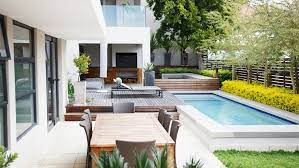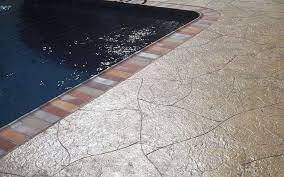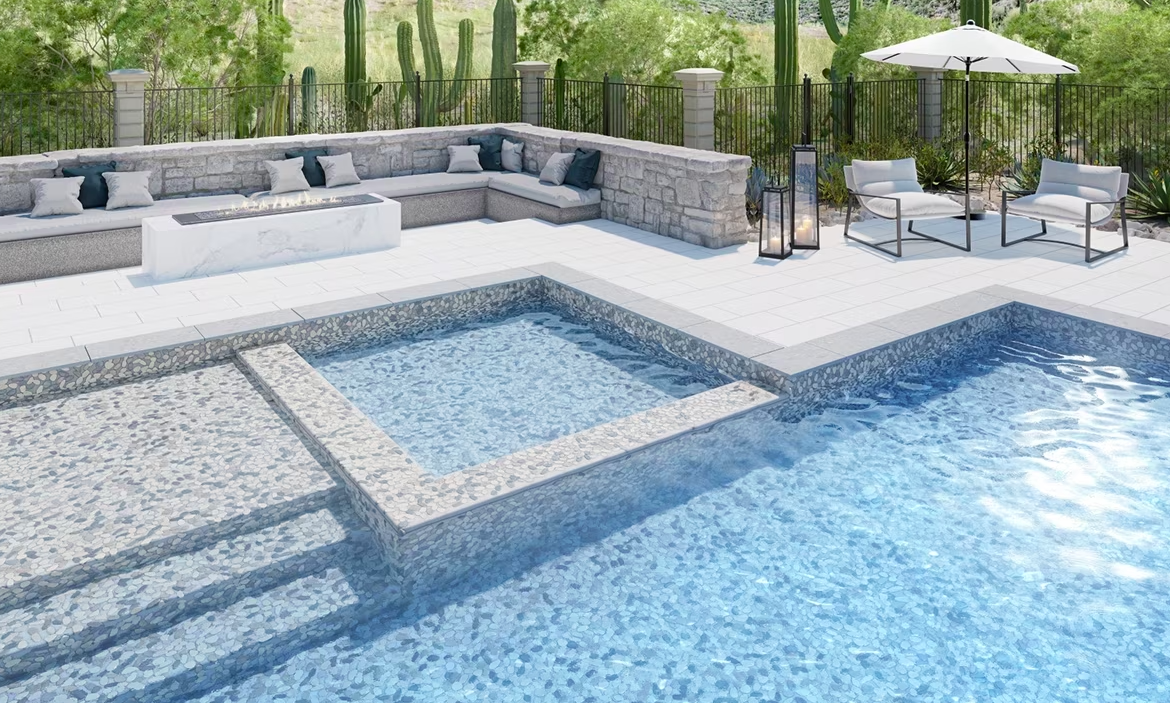When it comes to creating the perfect outdoor oasis, a well-maintained pool deck plays a pivotal role. Over time, however, even the most meticulously constructed pool decks can start to show signs of wear and tear. This is where pool deck resurfacing comes into play, offering a cost-effective way to rejuvenate your poolside paradise. There is a plethora of pool deck resurfacing materials available on the market, each with its unique advantages and price points. In this comprehensive guide, we will dive into the world of pool deck resurfacing materials, exploring options that cater to various budgets and preferences.
Exploring Your Options: The Best Pool Deck Resurfacing Materials
When considering pool deck resurfacing, it’s essential to keep both aesthetics and budget in mind. Let’s take a closer look at some of the top materials that can breathe new life into your pool deck:
Concrete: A Classic Choice with Endless Possibilities
Concrete stands as the foundation for most pool decks, offering durability and versatility that’s hard to beat. Whether you’re working with a limited budget or looking to splurge, concrete can be transformed in various ways to achieve the desired look. From simple texturing to imitating natural stone, the creative possibilities are virtually limitless. Concrete resurfacing is an excellent option for budget-conscious individuals who still seek durability and style.
Stamped Concrete: Elevating Aesthetics with Patterns and Textures
If you’re aiming for a high-end look without breaking the bank, stamped concrete might be the answer. This technique involves pressing patterns and textures into freshly poured concrete, resulting in a surface that mimics the appearance of more expensive materials like stone or brick. Stamped concrete opens up a world of design options, allowing you to customize your pool deck’s appearance while staying within your budget.
Tile: Infusing Elegance and Practicality
For those willing to invest a bit more in their pool deck resurfacing project, tile emerges as an elegant contender. Porcelain, ceramic, and natural stone tiles are all viable options, each bringing its unique charm to your outdoor space. Not only do tiles offer an array of colors, patterns, and textures, but they also provide a cooler surface underfoot – a welcoming feature on scorching summer days.
Composite Decking: Balancing Durability and Sustainability
Composite decking has gained popularity for its durability, low maintenance, and eco-friendly attributes. Composed of a blend of wood fibers and recycled plastic, composite decks emulate the look of natural wood while resisting fading, staining, and warping. Although the upfront cost may be higher compared to other materials, the long-term savings on maintenance can make composite decking a budget-friendly choice.
Wood Decking: The Timeless Allure of Natural Beauty
Wood decking carries an undeniable charm, infusing warmth and character into any outdoor space. While it requires more upkeep compared to composite materials, wood offers a unique aesthetic that can’t be replicated. Hardwoods like teak, cedar, and redwood are popular choices due to their natural resistance to moisture and decay. For budget-conscious homeowners who prioritize aesthetics and are willing to invest time in maintenance, wood decking remains a timeless option.
Takeaways:
Resurfacing your pool deck can breathe new life into your outdoor haven, but the choice of material should align with both your vision and budget. Here are some key takeaways to guide your decision:
- Concrete offers budget-friendly durability and customization potential.
- Stamped Concrete provides a sophisticated appearance with versatile design options.
- Tile brings elegance and cooler surfaces, but may require a higher budget.
- Composite Decking balances durability, low maintenance, and sustainability.
- Wood Decking offers timeless beauty with higher maintenance demands.
In the end, the best pool deck resurfacing material depends on your unique preferences, budget, and willingness to maintain the surface over time.





